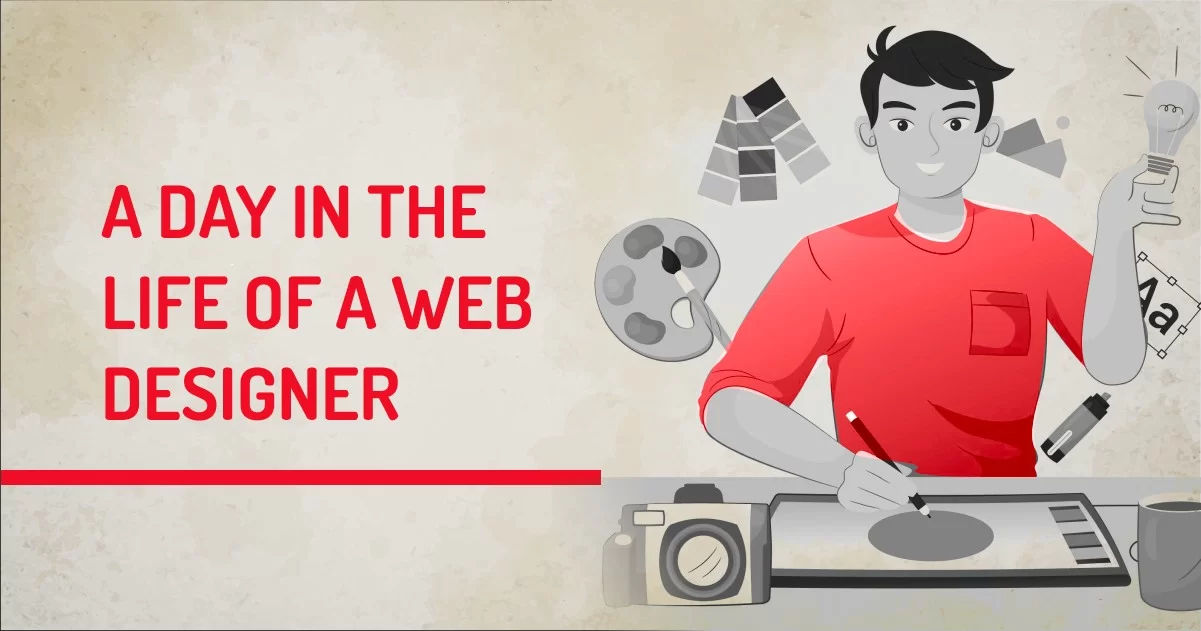
As the world increasingly moves online, the role of a web designer is becoming more and more important. Designing websites may seem like a relatively straightforward task, but it is a complex and multi-faceted profession. To be a successful web designer, one must have a variety of skills and knowledge in fields such as computer programming, user interface design, and graphic design. They must be able to think outside the box to come up with solutions to problems and be able to work within tight deadlines. In addition, web designers must be able to effectively communicate with clients to understand their needs and objectives.
Above all, web designers must have a passion for their work. This passion is what drives them to continue learning and keeping up with the latest trends in web design. It's what motivates them to create beautiful and user-friendly websites that their clients will love. They work in a variety of industries and often have to juggle multiple projects at once. So what does a typical day in the life of a web designer look like?
A Typical Day of a Web Designer
It Starts With Cup of a Coffee (Or Tea)
To be fully alert to do the best work, coffee should be the first-morning pick-up. This can plague even the most seasoned web designer. Once the caffeine has kicked in, it’s time to open up the laptop and get to work.
Planning Small and Long Tasks
Then they sit down at their computer and map out what needs to be done that day depending on the type of tasks or projects. This can involve sketching out ideas, creating prototypes and wireframes, and testing various designs. Designers have to make sure, that all other client's tasks are completed and delivered smoothly. There might be any new projects that may have come in overnight. So planning is the important part to make sure everything will stay on track. They must look at the big picture and decide what needs to be done to complete the project on time.
Team Meetings and Project Discussions
This involves working with a team of web developers, product designers, and content creators to make sure that each website is up to par. During such meetings, the team will discuss any new projects that need to be worked on, as well as any deadlines that need to be met. Also, discussing over vision for a new website, designing web layouts, coding pages, and testing site functionality. Once the meeting is over, the web designer will begin working on their assigned tasks.
Designing! What Else?
A designer may be working on designing a new website for a client or revamping an existing one, could be working alone or with a team of other designers. No matter what the project is, the day is spent creating beautiful and user-friendly websites. The bulk of the workday is spent creating layouts, banners, and mockups, and working with various software programs to put together a functional website.
Research. Don't Call It Copying
Researching might look at trends in web design, user experience, or search engine optimization. They also might read articles or watch videos about their craft. As a web designer, researching also means learning something new to keep the skills sharp and designs fresh. They will also look at the competition to see whether they are doing well and what could be improved upon.
My Rules And Then My Time
"My time" for a web designer can mean taking a few minutes out of the day to work on a personal project. This could involve reading design blogs, attending webinars, or listening to podcasts. It's important to have that time to explore your creativity without any pressure or deadlines. In between projects, most designers take some time for themselves – to stay creative, relieve stress, and just have some fun.
Brainstorming, Overthinking
The life of a web designer is one of constant brainstorming. From the moment a project is assigned until it is completed, the web designer must think of creative ways to bring the project to life. This can be a daunting task, as there are endless possibilities and often very little direction. However, the satisfaction that comes from seeing a project through from start to finish is worth the effort.
My Schedule as a Web Designer
 7.00 am - Wake up, Freshen up, Go for a morning walk
7.00 am - Wake up, Freshen up, Go for a morning walk
8.00 am - Breakfast, Checklist of daily work
9.00 am - Get a shower and get ready for the office
10.00 am - Reach the office, Get an update on previous work, and prepare the to-do-list for the day
10.15 am - Start designing work
1.00 pm - Go for lunch
1.30 pm - Get back to work
4.00 pm - Short break
4.30 pm - Team meeting on ongoing and upcoming projects
5.00 pm - Accomplishing design elements
6.30 pm - Reviewing the work for the next day
7.00 pm - End of the day at the office and beginning of other responsibilities at home
11.00 pm - Bed Time
Experienced & Fresher Web Designer
When it comes to web design, there is a big difference between an experienced designer and a fresher. An experienced web designer knows the ins and outs of the industry whereas a fresher, on the other hand, is still learning the ropes. However, both types of designers have an important role to play in the world of web design.
For experienced designers, the work can be exciting and ever-changing, with new challenges to keep them engaged. For fresher designers, the work can be daunting and overwhelming, with a steep learning curve to contend with.
If you are an experienced web designer, you will have a portfolio of work to show potential clients. You will be able to work independently and manage your own time. If you are a fresher web designer, you will need to build up your portfolio of work. You may need to start working for an agency or studio before you can progress to working independently.
Tips To Be A Good Web Designer
Be passionate about your work
You must have a true passion for the industry and for your craft to be successful. If you don't enjoy it a lot, you won't go too far with it. Starting anything new is always difficult. Everyone has a different taste and everyone thinks they can design. But it is essential that you find your style first.
Create a to-do list each day
Stay organized and on track. Try to keep your list realistic, so that you can accomplish everything on it. It's a simple thing. If you don't measure, you can't know if you're performing or not. So create a to-do list and self-evaluate your work every day and you can stop creating a pile of work. Believe me it is stress full.
Express your ideas to the team
Being able to communicate what you want to achieve and being able to get feedback from the team in order to improve. It is always a better idea to get some fresh ideas from other people your brain can only produce so many ideas.
Stay up to date with the latest trends
This can be done by reading design blogs, attending workshops and conferences, and following designers on social media. The Internet has been here for a long time now. And you can easily get an idea anywhere on the web. Use your idea to create the trend differently.
Be open to feedback
Feedback can be positive or negative, but either way, it is useful. This helps to improve your skills and create better ones. No matter what your design you'll always be criticized for something. Criticism is just one type of feedback. You can develop a practice about negative feedback to make it right next time.
Practice, practice, practice!
To get better at web design is to put in the hours and keep trying new things with trends and technologies emerging. If you do a lot of client work, You have to practice. With practice, you can optimize your design and the way you deliver, and do revisions on your design fast.